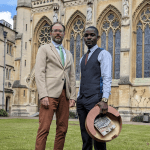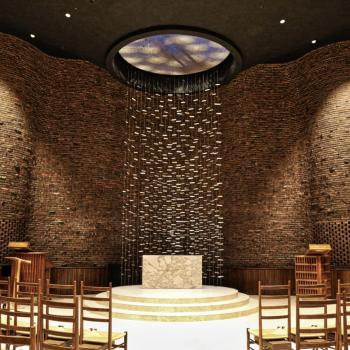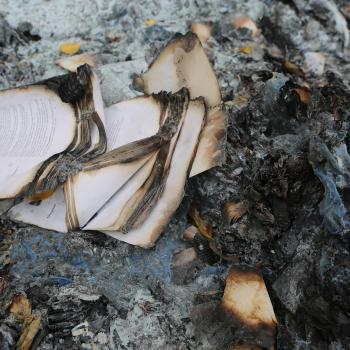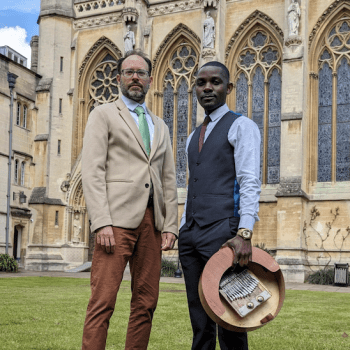This is part 2 of an article exploring musical settings of the Stabat Mater. To read the first part, click here.
By Josh Rodriguez, guest contributor
Hawar Tawfiq
Pain is universal, and classical concert music is a vast canvas used by people all over the world to communicate and empathize. Born in Sulaymaniya (Kurdish northern region of Iraq), Hawar Tawfiq fled his homeland in 1998, finding asylum in the Netherlands. There his musical talents were discovered by a teacher who worked in the refugee center where he stayed. He is not religious, but was interested in setting the Stabat Mater (2013) because he resonated with its depiction of a mother’s pain.
Tawfiq remembers accompanying his mother to funeral wakes as a child, and describes the Kurdish mourning tradition in which “the next of kin of the deceased would sit in the middle of the room and the other guests, such as neighbours and acquaintances, would gather around them. Then, out of the blue, the women present would begin to cry out loud and their spontaneous laments would gradually come to resemble the howling of wolves.”
Tawfiq found creative ways to musically depict this lamentation as well as the horrific scourging of Christ using percussion and strings to illustrate the physical violence. Christ’s death is symbolized by a slowly weakened musical pulse which eventually stops, reflecting the halted heartbeat of the crucified one.
Tawfiq’s music typically explores “exotic, nostalgic, non-Western” sounds, and in his Stabat Mater ‘An Instrumental Dialogue with the Gregorian Version’, he explores connections between Gregorian chant and Kurdish sounds, striving to communicate “purity and the suggestion of infinity, moving and reverent.”
While his setting offers moments of intimate dialogue between the harp, solo violin, and percussion, many moments are appropriately far from comforting, instead exploring Mary’s grief, terror, and loneliness. “No matter how much one feels for the grieving mother, in the end no one else can completely share the state of mind of a woman whose thoughts are not only taken up by the inhuman suffering inflicted on her son but also by flashes of memories of happier times.” Click to hear excerpts from the composer’s website (music begins at 3:08).
Make me gently to weep with you,
and to feel the pain of the crucified,
until I will have lived.
Paul Mealor
For Welsh composer Paul Mealor, music began through a spiritual experience at the age of nine when he fell into a river. He recalls, “I was being dragged under and I fought [to get out] but then something happened… [as I thought I was about to die] I surrendered. And at that moment, the most amazing thing happened: this warmth came all over my body… and I realized at that moment that death was not such a bad thing, and it was a beautiful thing. I was dragged out of the river and resuscitated and from that moment on… I knew there was a spiritual life, and I wanted to know more about it. And that led me to the Anglican church.”
His subsequent encounter with choral music at St. Asaph Cathedral in north Wales completely astounded him, clarifying his calling to composition. Mealor’s music resonates deeply with both choirs and audiences around the world. In works like Ubi Caritas and She Walks in Beauty recorded by Decca Records, Mealor invites listeners on a breathtakingly beautiful journey through melodies reminiscent of early church music reharmonized with sonorities more commonly heard in contemporary popular music and film scores.
Mealor’s Stabat Mater (2009) is perhaps one of his most profoundly personal pieces. He writes, “We are asked, in this text, to join Mary in her sorrow and by joining her, allow her and Christ to grant us a place in the kingdom to come. Again, loss and love, darkness and light are key images—Life in death, the truest oxymoron.” This work was composed “as an antidote to the pain I felt on my grandmother’s death… in this second movement, the voice of ‘the mother’ is heard as the choir sing[s] chants of acceptance underneath and the orchestra almost acts like rising incense. This is music of pain, but of the beauty and peace which tends to follow pain if our hearts are open.” You’ll find an excellent example of what Mealor describes here (around 10 mins into the work).
When my body dies,
grant that the glory of heaven
be given unto my soul. Amen.
Just as Job from the Old Testament, we may never understand the “why” behind a tragic event. But grounded in the “truest oxymoron” of Christ’s cross—life in death—the empathetic poetry of Stabat Mater and its many-faced multicultural musical interpretations reminds us that we are not alone in our grief. It is this astounding promise rooted in the image of the cross—a symbol of death transformed into a symbol of life—that gives transcendent meaning and hope to all who believe.
Josh Rodriguez
Note: This is a lightly edited article that originally appeared on a Forefrontfestival.com blog on July 20, 2020. Reprinted with permission from author and previous publisher.













